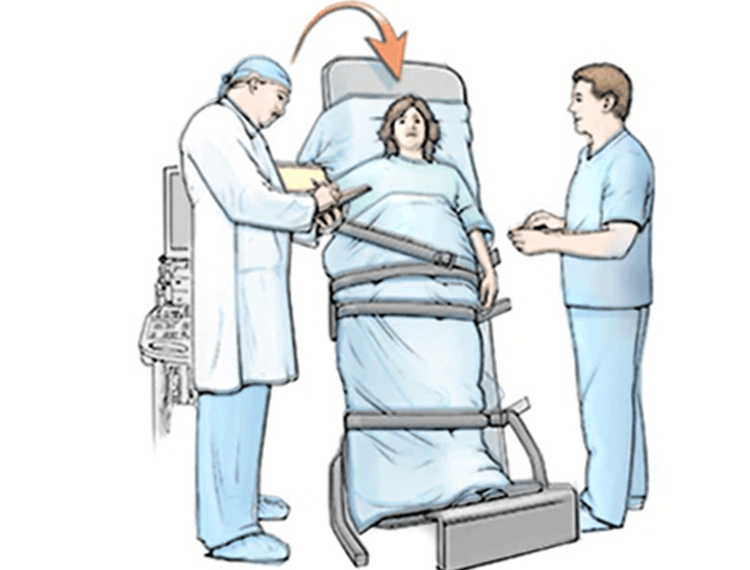


A head-up tilt test (HUTT) or a tilt table test is performed to determine the cause of syncope or fainting spells. The test is usually recommended to patients experiencing recurrent episodes of dizziness, light-headedness and fainting. The test is carried out by strapping the patient to a bed and tilting it at various different angles while the vital signs like blood pressure, electrical impulse and oxygen levels are monitored. The test is usually performed in an electrophysiology lab.
WHAT IS SYNCOPE?
Syncope is the medical term used for fainting. It is a sudden and short-term loss of consciousness that may last for a few minutes or even hours and is usually a result of the alleviated supply of oxygenated blood to the brain.
WHY IS THE TEST PERFORMED?
A head-up tilt test helps the doctor to measure the patient’s vitals in different positions. If the symptoms are experienced while the patient is in an upright position, the problem may be a result of reduced blood supply to the brain which indicates some cardiovascular problem.
PREPARING FOR THE TEST
- The patient is required to take all the medication as prescribed by the doctor.
- The patient should fast for at least 12 hours prior to the test. Even if you have to take medication, drink only a small sip of water to help swallow the pills.
- The patient is required to inform the doctor about the current and their dosage.
- The patient is required to wear loose and comfortable clothes. It is advisable to avoid wearing jewellery or other ornaments on the day of the test.
PROCEDURE
A head-up tilt test is usually performed in two parts.
Part I – This helps the doctors to determine how the patient’s body responds to change in position
- The patient is asked to lie down on his back on top of a table and straps are fastened around his/her waist, arms and legs to prevent him/her from falling. Small wires connected to an electrocardiograph machine are attached to the patient’s chest with the help of sticky pads.
- The patient is connected to 4 different monitors, i.e.
1. Defibrillator or pacemaker: This is attached to the sticky pads placed on the centre of the chest and back of the patient. This is used to control the rate at which the heart beats by generating energy.
2. Electrocardiogram (EKG):This is attached to several sticky electrode patches on the patient’s chest to generate theimages of the electrical impulses going through your heart.
3. Oximeter monitor: The device is attached to the patient’s finger with the help of a small clip so as to monitor the oxygen levels in the blood.
4. Blood pressure monitor: The blood pressure cuff is fastened around the patient’s arm.
- After making sure that the patient is properly secured to the table, it is tilted in such a way that the patient’s head is around 30 degrees higher than the rest of the body. Blood pressure and heart rate of the patient are monitored simultaneously.
- The bed is further tilted after 5 minutes such that the patient is lying at an angle of around 60 degrees. Patient’s vitals are monitored for almost 45 minutes. The patient is required to stay still during the procedure and inform the doctor is he/she is experiencing any discomfort.
- If the patient’s blood pressure alleviates during the procedure, the test will be stopped. In such cases, the second part of the test is not required. If the blood pressure does not drop, the second part of the test is required.
Part II – This helps the doctors to determine how the body responds to certain medicines that escalate the heartbeat. The medicine triggers an adrenaline rush which increases the patient’s sensitivity to head-up tilt test (HUTT).
- The medicine is administered intravenously
- The table is directly tilted to make a 60-degree angle
- Blood pressure is monitored simultaneously.
- The test is stopped if blood pressure alleviates.
If both the parts of the procedure are carried out, it may take about 90 minutes however, if only the first part is carried out, it will take 50 to 60 minutes.